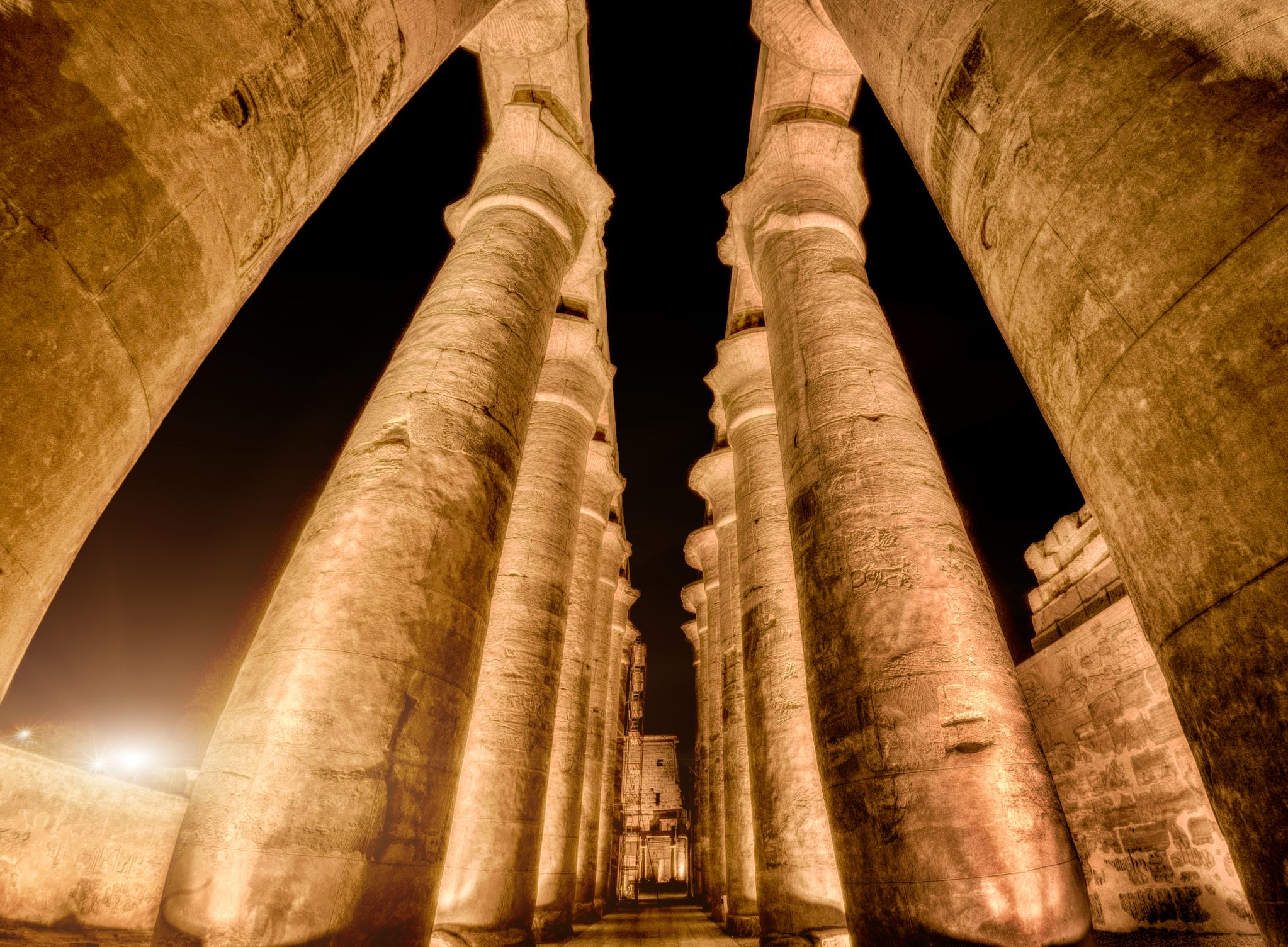Most Egyptian temples were a group effort; the culmination of generations of pharaohs making their mark for posterity and demonstrating their cosy relationship with the gods.
Luxor Temple was no different, although the temple you see today is largely the work of just two powerful pharaohs who lived 140 years apart: the 18th Dynasty’s Amenhotep III and the 19th Dynasty's Ramesses II.
It was Amenhotep who built Luxor Temple, probably on the site of an earlier, Middle Kingdom temple, to celebrate the annual Opet Festival. This festival was part sacred ritual and part street party.
Deep inside the temple, the powers of the creator gods were recharged, and the king's connection to the royal ka - the everlasting spirit of kingship - was renewed. Now with the gods' blessing, the reinvigorated king emerged triumphant, blinking in the bright sunlight, to a crowd of eager Thebans, ready to celebrate (i.e., drink heavily).
We'll never know what grand vision Amenhotep III had for the temple; he didn't live to see the end of the last project he had commissioned - the grand colonnade.
The Colonnade of Amenhotep III, 100 metres long, has seven pairs of 16-metre-high, open-flower papyrus columns, which still support their huge architrave blocks.
The Colonnade was designed to serve as the grand new processional entrance to Luxor Temple. The aging king died before it was completed, and his plan had to be realised by his grandson, Tutankhamun. The 'boy-king' famously died young, and so it was left to his successors, Ay and Horemheb to finally complete Amenhotep's great Colonnade.
The only attention the colonnade received under the reign of Amenhotep III’s son, Akhenaten, was of a negative sort; defacing his father’s name as part of his campaign against the god Amun. It was when Akhenaten's son, Tutankhamun came to power and restored the old order, that work on the colonnade continued. In time, Kings Seti I, Ramesses II and Seti II would also add their names to the great columns.
Today, admiring visitors approach the Colonnade of Amenhotep III through the First Pylon, added to Luxor Temple around 140 years later. You can see the western tower of the pylon between the columns of the Colonnade in this photograph.
